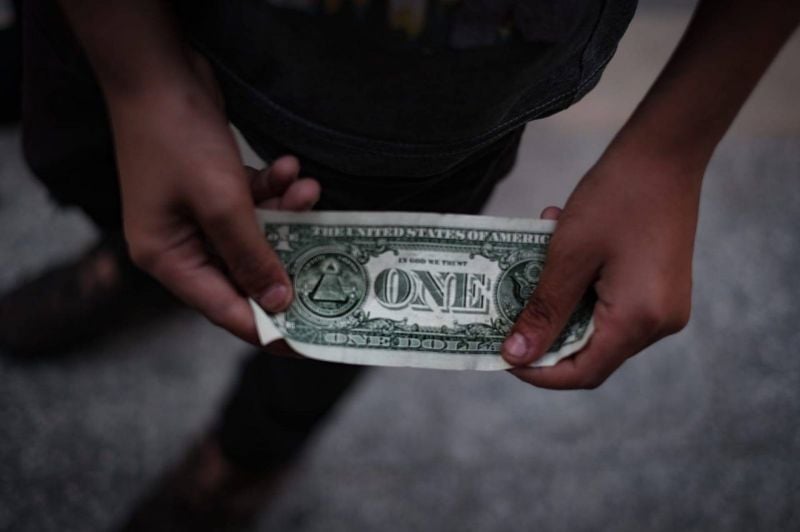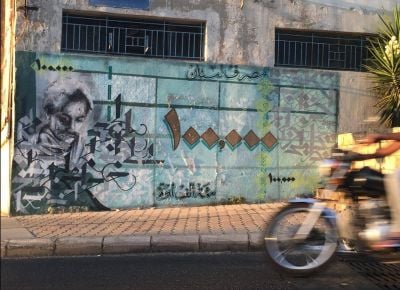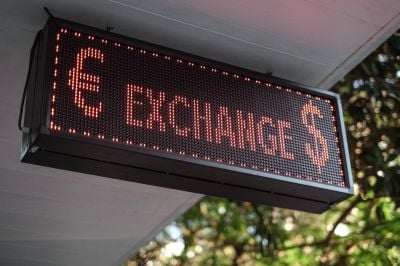
A person holds up a $1 banknote in Lebanon. (Credit: João Sousa/L'Orient Today/File photo)
This article is part three of a three-part series. Read parts one here and two here.
2024 has dawned upon us, bringing Lebanon into its fifth year of economic crisis — one of historic, unprecedented magnitude. The last few years have seen the country’s currency decimated, losing more than 98 percent of its value since 2019.
The Lebanese lira was pegged at a rate of LL1,507 to the US dollar from 1997 until October 2019, after which it went into a free-fall depreciation, reaching an all-time low of LL140,000 on the parallel market in 2023.
Since March 2023, however, the lira has not surpassed an LL100,000-to-the-dollar rate, and remains oddly stable today, hovering around LL89,000, despite the outbreak of the war in Gaza and the political uncertainty.
While the International Monetary Fund (IMF) continues to call for a floating exchange rate system, other local and international experts alternatively advocate for full dollarization or its softer version: currency boards to soothe the country’s economic woes.
L’Orient Today spoke to five economic experts to reflect on the legacy of Lebanon’s 22-year-old peg and discuss the contrasting views pertaining to the nation’s future course of action and alternative exchange rate system recommendations.
In this article, we discuss the pros and cons of the hard peg.
BEIRUT — In late November 2023, researchers at Harvard Growth Lab published a report in which they addressed Lebanon’s economic crisis and proposed a comprehensive plan for the country’s recovery.
The report’s most notable recommendations included a suggestion for Lebanon to move to the full dollarization of its economy, an option at the heart of contentious debates amongst experts, scholars and Lebanese government officials.
That would mean Lebanon giving up the lira completely in favor of adopting the US dollar.
The Harvard Growth Lab argued that full dollarization is a better option for Lebanon when compared with its alternative — a managed floating exchange rate — and that it would put an end to the country’s hyperinflation.
It further claimed that the benefits associated with dollarization were “especially significant in the Lebanese context, while conventionally cited drawbacks of dollarization [were] less important, given today’s economic reality in Lebanon.”
Shortly after the onset of the crisis in 2019, Layal Mansour, a monetary policy expert and author of the research paper The Dollarization Curse: Hard Peg Choices to Cure the Currency, was one of the first to advocate for the adoption of either full dollarization or its softer version, currency boards.
Let’s see what those two options look like:
Full dollarization and currency boards: Same same but different?
Full dollarization (FD) and currency boards (CB) are essentially two types of hard currency pegs (as opposed to the peg adopted in Lebanon since 1997, which falls under the umbrella of “soft pegs”).
Full dollarization essentially refers to a union between a country (like Lebanon) and an economically strong foreign partner (like the United States), from which the smaller country “imports” the partner country’s currency. Under FD, there is no domestic currency other than the “imported one.” So, if Lebanon were to become fully dollarized, it would give up the Lebanese lira completely and adopt the US dollar as its only official local currency, supplied by the Federal Reserve.
A currency board, on the other hand, is an exchange rate regime where a country enters into a legal commitment to fix its currency exchange rate to an anchor currency that ensures “automatic convertibility.” Therefore, if Lebanon were to adopt a currency board it would keep a local currency, but it would be anchored to the US dollar. The Banque du Liban (BDL) would also be required to have foreign asset reserves (in US dollars) equal to the level of the local currency in circulation in the Lebanese economy. Hence, the local currency can be converted into US dollars at any point in time.
Under both regimes, and contrary to the soft peg under which Lebanon had been operating for years, the central bank’s powers would be abolished. Lebanon would be giving up its monetary policy autonomy, or its control over money supply, interest rates and acting as a lender of last resort (the central bank’s ability that offers loans to banks and other eligible institutions that experience financial difficulties or come close to collapsing). This would highly reduce the possibility of politicians interfering with monetary policy — and printing money to finance corrupt practices.
A country adopting full dollarization loses its revenue from seigniorage (the profit it generates from issuing new currency, deriving from the difference between the face value of newly printed banknotes and their respective production costs), whereas governments adopting a currency board would not.
Hard peg regimes are theoretically expected to mitigate the risk of sudden and sharp currency depreciations, provide credibility to the country and attract foreign direct investments (FDIs).
A polarizing debate
“When you’re a highly dollarized country like Lebanon, you only have one solution: a hard peg,” says Mansour.
She considers Lebanon a chronically ill patient that needs to be treated in the context of its own crisis.
And she explains that any monetary policy intervention or reform would require 18 to 24 months before an economy can start experiencing some changes and see an impact, except in the case of full dollarization and currency boards, in which results are immediate.
“The aim right now is not to put Lebanon’s economy in the top 10 in the world, it’s to let the country survive.”
“The nickname of the currency board in economics is “the discipline program,” adds Mansour.
The problem though, is that “ discipline does not work for the Lebanese politicians who were behind the economic crisis to begin with, ” she explains.
Wassim Shahin, a monetary policy professor and dean of the Adnan Kassar School of Business at the Lebanese American University (LAU), remains skeptical about full dollarization and considers it “easier said than done,” given the implication of losing monetary policy autonomy.
“We are talking about a currency that we do not print as a country,” says Shahin, who believes that Lebanon would be fully tying its economy to that of a “foreign country that barely knows we exist, and that doesn’t care if we exist, so their economic interests will always come first.”
This would also mean Lebanon would have to dollarize its public sector and government entities (salaries, fines and more), which he says the country is not ready for.
Shahin adds that it would be hard to adopt a currency board in a cash economy, without clear information on how many dollars flow in and out of the country, and how many dollars are already in circulation in the economy.
Mohammad Fheili, a monetary economist and risk strategist, highlights that Lebanon would become more vulnerable to economic shocks in the currency-issuing country — in this case, the US. Lebanon would also lose its ability to make seigniorage profits, but he thinks it’s “the least of our concern right now in the country.”
Nassib Ghobril, chief economist at Byblos Bank, believes that Lebanon has a choice to make, and adopting full dollarization remains a question of priorities. “There are advantages and disadvantages to fully dollarizing the economy, and it may not be the ideal solution, but it’s maybe worth considering, given the economic context.”
Where do we go from here?
Almost all experts seem to agree on one thing: Lebanon needs to undertake serious and significant reforms before moving to any exchange rate system.
At this stage, it seems quite obvious that it will be impossible for Lebanon to go back to or maintain its old LL1,500-to-the-dollar peg. So the question remains whether officials will be able to agree on one suitable course of action, and finally act upon it, nearly six years into the crisis.
No matter which exchange rate system Lebanon swings to next, Mansour says, “there is no single currency regime that is correct to all countries, and all the times.”

